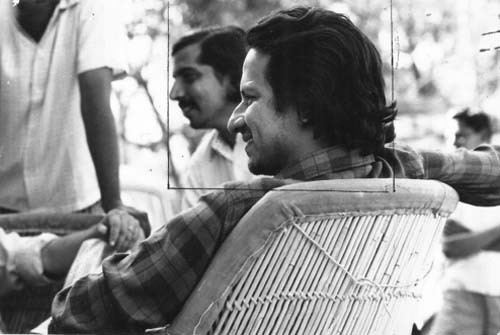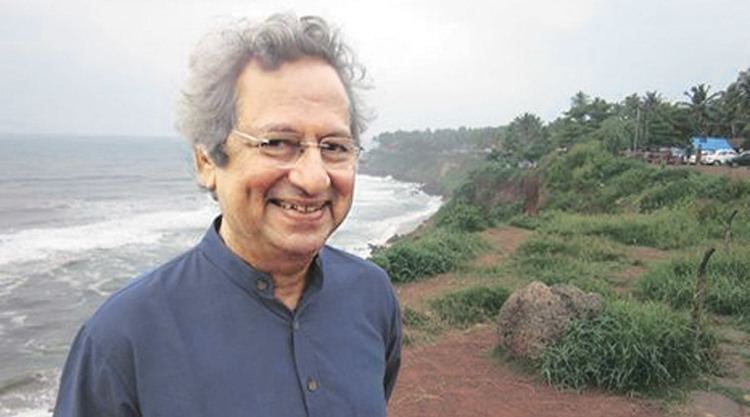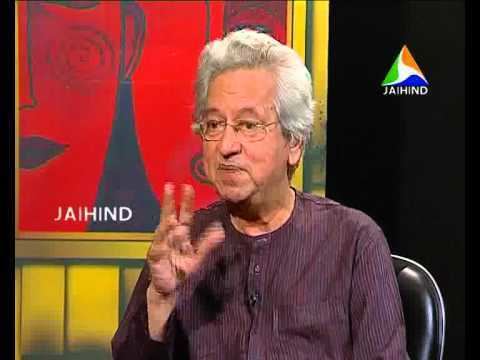Nationality Indian Name Kumar Shahani | Role Film director | |
 | ||
Occupation Film director, film academic, visual artist Awards Filmfare Critics Award for Best Movie Movies Maya Darpan, Kasba, Tarang, Char Adhyay, Dheeme Dheeme Similar People K K Mahajan, Bhaskar Chandavarkar, Mita Vashisht, Vanraj Bhatia, Nirmal Verma | ||
Guftagoo with Kumar Shahani
Kerala State Film Awards Controversy : Jury chairman Kumar Shahani against best director award
Kumar Shahani (born 7 December 1940) is a noted Indian film director and screenwriter, best known for his parallel cinema films, Maya Darpan (1972) and Khayal Gatha (1989) and Kasba (1990). Due to his dedication to formalism, and with the reputation of his first feature, Maya Darpan being considered among Indian cinema's first formalist film, he is frequently grouped by critics and film enthusiasts alongside similar stylistic filmmakers such as Pier Paolo Pasolini, Andrei Tarkovsky, and Jacques Rivette.
Contents
- Guftagoo with Kumar Shahani
- Kerala State Film Awards Controversy Jury chairman Kumar Shahani against best director award
- Early life
- Career
- Influences
- References

Early life
Shahani was born in Larkana, Sindh (now in Pakistan), after the partition of India in 1947, Shahnani's family shifted to the city of Bombay (now Mumbai). He received a B. A. (hons) from the University of Bombay in Political Science and History and studied screenplay writing and Advanced Direction at the Film and Television Institute of India, where he was a student of Ritwik Ghatak. He also studied under the renowned historian D. D. Kosambi. He was awarded a French Government Scholarship for further studies in France, where he studied at the Institut des hautes études cinématographiques (IDHEC) and assisted Robert Bresson on Une Femme Douce.
Career

He returned to India to make his first feature film Maya Darpan in 1972 and had to wait twelve years before he received funding to make his next full-length feature film, Tarang.
From 1976 to 1978 he held a Homi Bhabha Fellowship to study the epic tradition of the Mahābhārata, Buddhist iconography, Indian classical music and the Bhakti movement.
Influences
Shahani had considered Roberto Rossellini and Robert Bresson as major influences on his work and those who he learned the most from. When comparing the two he stated, "There is austerity in Bresson. But there is a possibility in cinema to have both: austerity and ornamentation. In Bresson, there is mainly austerity even though he aspires to have spectacle. When I work along those lines, I want the ornamentation to stand out. The magic of that reality must appear and we ought to allow that to happen. The notion of ornamentation that we have in India, the alankar, of how we play with it, that is something I like to retain in my work. And this is not there either in Rossellini’s work or Bresson’s in the works of Catholic filmmakers. When they move towards austerity, they really move towards it: Bresson in the tradition of St Augustine and Rossellini more in the manner of notational narratives."
For his film Tarang which dealt with labour issues, Shahni mentioned he consciously tried to avoid 'repeating' or 'imitating' one of his favourite films Sergei Eisenstein's Battleship Potemkin. Shahani stated, "for Tarang for instance, I was shooting a strike sequence. It was an obvious point where one could have quoted Eisenstein. Most filmmakers in such a situation would do so, inadvertently and unconsciously. Even the most "bourgeois" filmmakers as it were, the most commercial ones, or their exact opposites, would all do that. That is why one should remember him, to remember what he did and not to repeat it. So I remembered him while I was shooting that sequence, constantly like a prayer. We can't help saying that Eisenstein did it such a way and let only him do like that. That is why I feel very happy with that particular sequence in Tarang. It doesn't have, in any sense, an imitation of Eisenstein."
